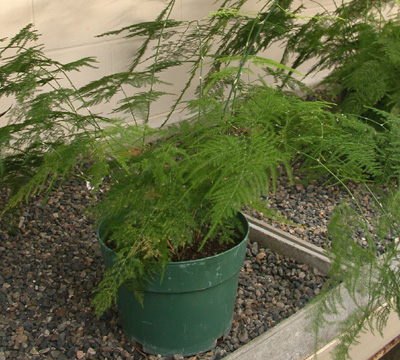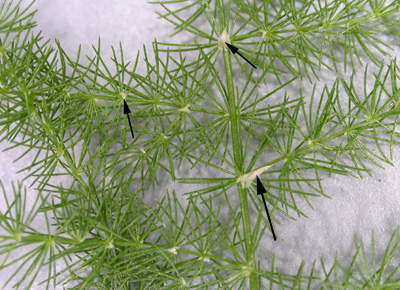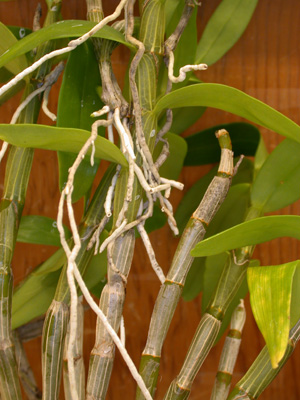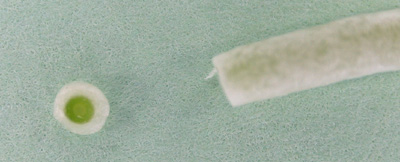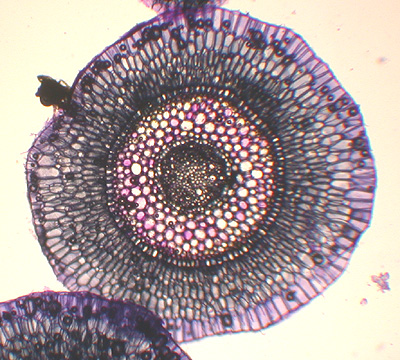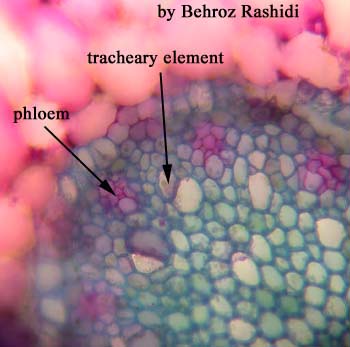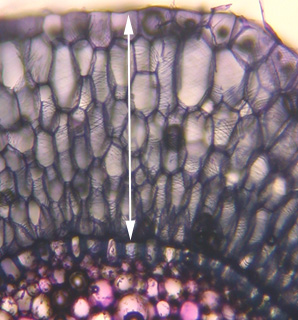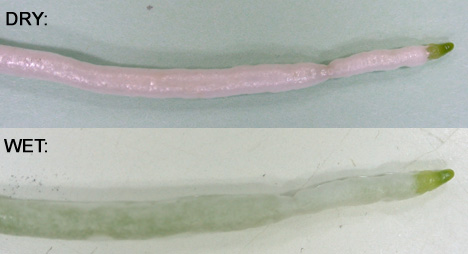PHOTOSYNTHESIS
Stems and roots may be altered to serve as photosynthetic organs in place of or as a supplement to the leaves. Branching, leaflike stems called cladophylls may be the chief organs of photosynthesis in plants which lack leaves, or have reduced, non-photosynthetic leaves. Roots of epiphytic orchids may develop a chlorophyllous layer and serve as a supplemental, or even as the only, site of photosynthesis for the plant.
Asparagus (Asparagus fern)
Although the photosynthetic structures look like leaves they are actually modifed stems.
The leaves are inconspicuous and scalelike (indicated with arrows).
Asparagus fern is really not a fern at all…in fact here is a picture of some young shoots…look familiar????
Cattleya (orchid) aerial root
Aerial roots of Cattleya are not typical roots! This plant is an epiphyte so the roots are aerial. They do serve as absorptive organs, but they are also photosynthetic.
A close up of the roots:
If we chop a root in half we can see that within the white multiple epidermis (velamen) there is photosynthetic tissue.
Below is a cross-section through an aerial root (stained with toluidine blue).
Here is a cross-section through a root. It has been stained with toluidine blue. The cells of the cortex are phtosynthetic.
The central core consists mainly of vascular tissue, with parenchyma cells in the centre.
A layer of thick-walled cells (endodermis) is present outside the central core. Outside of the endodermis there is a cylinder of parenchyma cells which contain chloroplasts (thus called chlorenchyma).
The outer white covering (here blue because it has been stained with toluidine blue) is wide and consists of elongated cells, with thickened bands on the cell walls which give the tissue a criss-cross appearance. This tissue is considered by many people to be a multiple epidermis and has been given the name velamen. The velamen is thought to be a protective structure, possibly providing protection from both mechanical injury and water loss.
Here is a little demonstration showing a dry root and a wet root. You can see that as the cells of the velamen fill up with the water the colour of the cortex cells can be seen. Pretty neat system. When the root is dry the velamen is white and reflects light (helping to reduce water loss).
PHOTOSYNTHESIS
BACK TO MODIFICATIONS FRONTPAGE

